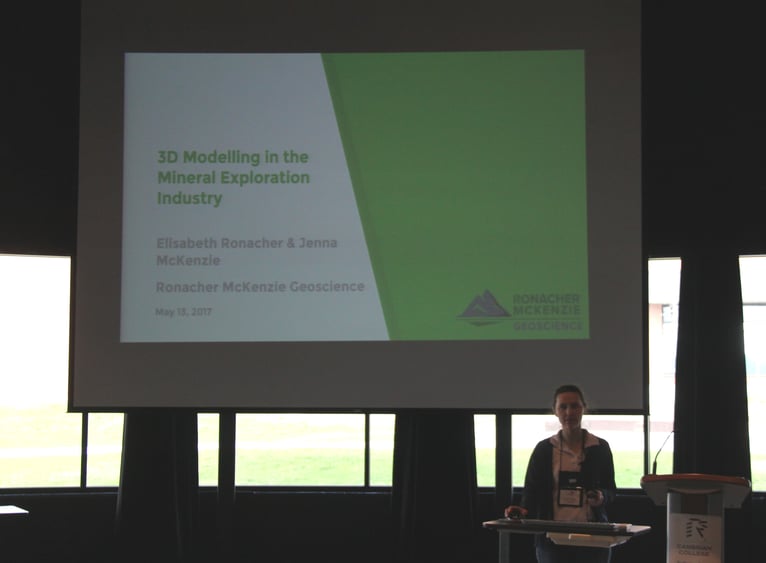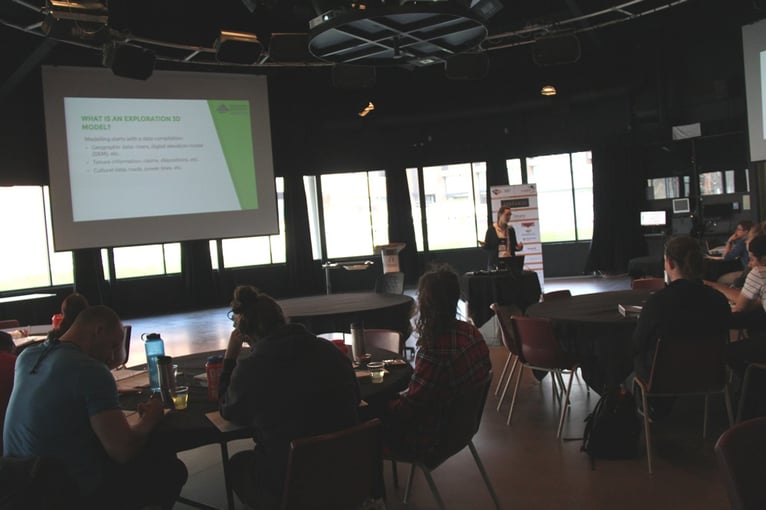
Each year in May, the PDAC organizes the Student Industry Mineral Exploration Workshop (“SIMEW”), a two-week workshop for about 25 of the best geology students from universities and colleges in Canada. The goal of the workshop is to expose students to all aspects of the mineral exploration industry, and in particular those areas that may not be part of an undergraduate curriculum.
The seminar often includes:
- mine visits
- mineral resource estimation
- geophysics
- mineral exploration reporting rules and regulations (e.g., National Instrument 43-101)
- professional organizations (e.g., Association of Professional Geoscientists of Ontario)
- business aspects (e.g., joint ventures and option agreements, flow-through)
- mineral economics, corporate social responsibility
- Aboriginal participation in exploration
- quality assurance/quality control
- 3D modeling
The workshop takes place in northern Ontario and western Quebec, with its base in Sudbury, Ontario, and includes presentations by several industry professionals. This year, the workshop was held May 4 - 19th, at Cambrian College.
Elisabeth Ronacher, Principal Geologist at Ronacher McKenzie Geoscience, has contributed to the workshop for several years, and was asked again this year to introduce the undergraduate students to 3D modeling. The students do not get much exposure to 3D modeling at university, yet 3D modelling is an important part of intelligent exploration. Elisabeth’s presentation informs students that 3D modelling is more than data visualization and spinning models in all directions on the computer screen.
A 3D model is a compilation of all exploration data in one space – given that explorationists deal with the subsurface, that space should be three-dimensional, not only 2-dimensional. Compiling the data in the three-dimensional space helps the analyst to integrate the various datasets and interpret them together, not in isolation.
The students learn that each dataset that they might collect during a summer job is a piece of a bigger puzzle. For example, a student may take a summer job logging drillcores. Rather than just logging the core mechanically and handing in the log sheet at the end of the day, the students are encouraged to think about what they log and what their log means. They are urged to plot the drillholes that they log in 3D.
Geoscientists no longer have to plot holes on 2D sections – many 3D software packages are now available. At the workshop Elisabeth demonstrates the use of 3D software, including free software that the students can download and use.
3D modelling is one tool in an explorationist’s toolbox; it is a means to get the maximum out of each dataset that the students may collect on a project. It will help them better understand their exploration data and thus facilitate choosing the best targets for follow-up exploration.

Elisabeth loves sharing her experience with the new generation of geoscientists: “Interacting with the students is a very rewarding experience and fills me with confidence that the exploration industry will be in good hands in the future. The students I meet at SIMEW are outstanding and will be the industry leaders of the future. They are smart, open to new ideas and hard-working; I think these characteristics are prerequisites of success. In addition, many of them are passionate about what they do. I thank the PDAC and the organizers of SIMEW for allowing me to share my experiences with the students.”
For more information about the Student Industry Mineral Exploration Workshop visit the PDAC website.





